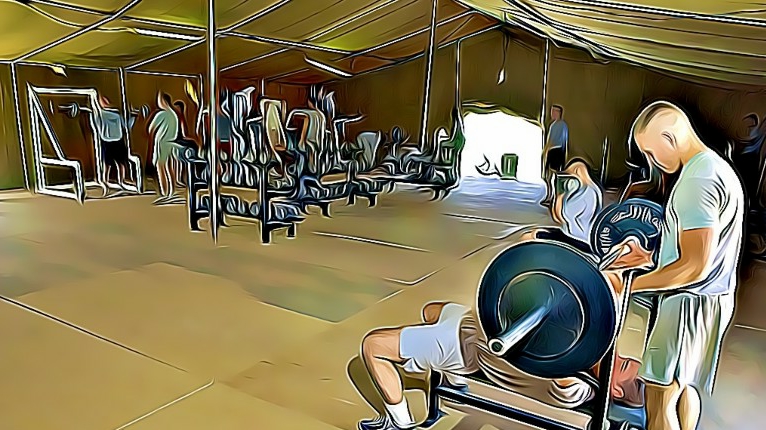Good afternoon all colleagues, on this occasion I will write about "The Leg Tuck How One Exercise is Shaking Up the Army's Fitness Standards", The Army Combat Fitness Test (ACFT) is a new physical fitness test that has been implemented by the United States Army. The test consists of six events that are designed to measure a soldier's physical readiness for combat. One of the events, the leg tuck, has received particular attention due to its difficulty and the controversy surrounding its inclusion in the test. In this article, we will discuss the leg tuck event, including its history, how it is performed, its impact on the ACFT, and its controversy.
History of the Leg Tuck
The leg tuck event was first introduced as part of the ACFT in 2018. It replaced the traditional sit-up event that was part of the Army Physical Fitness Test (APFT), which had been in use since 1980. The sit-up was replaced due to concerns that it did not adequately measure core strength and was too easy to cheat.
The leg tuck was chosen as a replacement because it is a more challenging exercise that requires significant core and upper body strength. It is also a functional exercise that simulates movements that soldiers may encounter in combat, such as climbing over walls or obstacles.
How the Leg Tuck is Performed
The leg tuck is performed on a pull-up bar or a set of parallel bars that are set at shoulder width apart. The soldier begins by hanging from the bar with their palms facing forward and their arms fully extended. They then lift their knees up towards their chest, bringing them up to touch their elbows. The soldier must maintain this position for two seconds before lowering their legs back down to the starting position.
The leg tuck is performed for a maximum of two minutes, and the soldier must complete as many repetitions as possible within that time frame. The soldier may rest in between repetitions but must remain in the starting position with their arms fully extended.
Impact on the ACFT
The leg tuck is one of six events that make up the ACFT. The other events are the deadlift, standing power throw, hand-release push-up, sprint-drag-carry, and the two-mile run. The ACFT is designed to measure a soldier's physical readiness for combat by assessing their muscular strength, endurance, and power.
The leg tuck is a critical event in the ACFT because it measures a soldier's core and upper body strength. These muscle groups are essential for performing a wide range of combat-related tasks, such as carrying heavy equipment, climbing over obstacles, and engaging in hand-to-hand combat. A soldier who performs well in the leg tuck event is likely to be better prepared for the physical demands of combat.
Controversy Surrounding the Leg Tuck
Despite the leg tuck's importance in the ACFT, it has been the subject of controversy since its introduction. One of the main concerns is that the exercise is too difficult for some soldiers, particularly women and smaller individuals. Critics argue that the test unfairly disadvantages these soldiers and may lead to lower scores and increased rates of injury.
Another concern is that the leg tuck may not be a reliable measure of a soldier's physical readiness for combat. Some experts argue that the exercise is too specific and does not adequately measure other important fitness components, such as cardiovascular endurance and flexibility.
The Army has responded to these concerns by providing training and support to help soldiers prepare for the leg tuck event. They have also made adjustments to the test, such as allowing soldiers to perform a plank exercise instead of the leg tuck if they are unable to complete the exercise.
The leg tuck is a demanding exercise that requires significant strength in the core, back, and upper body muscles. It is a functional exercise that simulates movements that soldiers may encounter in combat, such as climbing over walls or obstacles.
One of the challenges of the leg tuck exercise is that it requires a significant amount of upper body and grip strength to hang from the bar while performing the exercise. This can be particularly difficult for soldiers who may not have as much upper body strength, such as women or smaller individuals.
To help prepare for the leg tuck exercise, soldiers can incorporate a variety of exercises into their training routine that focus on strengthening the muscles used in the exercise. These may include pull-ups, chin-ups, rows, planks, and other exercises that target the core and upper body muscles.
In addition to physical preparation, soldiers can also benefit from mental preparation for the leg tuck exercise. This may include setting goals, visualizing success, and using positive self-talk to help build confidence and focus during the exercise.
The leg tuck exercise has been the subject of controversy since its introduction as part of the ACFT. Critics have argued that the exercise is too difficult for some soldiers, particularly women and smaller individuals, and may lead to lower scores and increased rates of injury.
In response to these concerns, the Army has provided additional training and support for soldiers to help them prepare for the leg tuck exercise. They have also made adjustments to the test, such as allowing soldiers to perform a plank exercise instead of the leg tuck if they are unable to complete the exercise.
Overall, the leg tuck exercise is a challenging but important part of the Army Combat Fitness Test. It measures a soldier's core and upper body strength, which are essential for performing a wide range of combat-related tasks. By incorporating training and mental preparation, soldiers can improve their performance on the leg tuck exercise and be better prepared for the physical demands of combat.

